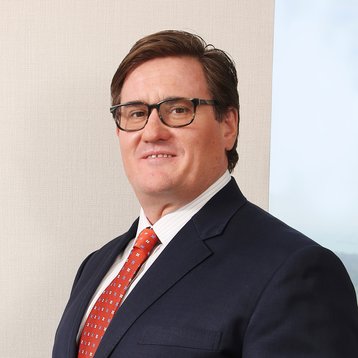Singapore-headquartered ST Telemedia Global Data Centres (STT GDC) has been busy over the last few years as it embarked on an expansion involving key markets around the globe. For instance, STT GDC partnered with GDS Services (GDS) to further expand and develop its portfolio of data centers in China, formed a joint venture with Virtus in the UK, and acquired a majority stake in the data center business of Tata Communications in India and Singapore.
Chris Street, the group general manager for Singapore and Global Alliances, told DatacenterDynamics about his organization’s plans and direction, particularly in the data center hub of Singapore where it now ranks among the largest data center operators in terms of floor space.
On home ground
In Singapore, STT GDC has a portfolio of five data centers with both wholesale and retail colocation customers. As we detailed in February, this includes three colocation facilities from Tata Communications jointly identified as STT Tai Seng, and the existing facilities of STT Defu and STT MediaHub.
STT Defu was built as the company’s flagship facility, while STT MediaHub is a joint venture with StarHub of which STT GDC sub-leases at least 65 percent. The obvious advantages offered by multiple data centers located in different parts of the island aside, how does STT GDC ensure quality and consistency across the various facilities?
“In all instances, we have operational oversight of the facility and managerial control of the business. This approach provides STT GDC with flexibility when it comes to evaluating new expansion opportunities as it gives us additional avenues of growth that may not be available to other data center operators,” Street said.
When it comes to growth opportunities, Street pointed to the significant investments currently occurring in the digital media and financial services sectors. In addition, he noted that the local Singapore market has seen “a lot of demand” from activities relating to recent push towards digital transformation and the ongoing demand for infrastructure as part of Singapore’s Smart Nation initiative.
A different approach
One of the key advantage of STT GDC is bringing both self-owned data centers and facilities from its various joint venture partnerships under its own banner. Street explained that this allows STT GDC to explore growth opportunities in both new and existing markets, as opposed to other service providers who may take a “stricter view” in terms of ownership.
“This agility is important when we are in a macro market which is growing at an accelerated pace,” he said, adding that STT GDC also adopts a flexible approach to meeting the needs of its customers. “Given our deep experience in the market, we have been able to develop innovative commercial models which meet these market demands.”
Rapid growth aside, Street emphasized the importance of the right partner and the need for local competence. He said: “We are selective about who we partner with and ensure that any new expansion projects fit with, and support, the existing portfolio of companies. We want to ensure that they are complementary to the existing portfolio.”
In Singapore, partnerships provide STT GDC with three facilities and a service portfolio with a strong connectivity component. In India, the business has 14 colocation data centers and positions STT GDC as the market leader with opportunity for “significant growth in the near and mid-term”.
“While we look to execute to global standards of excellence, we don’t lose sight of the importance of local market expertise. This is a crucial aspect for customers as they enjoy a consistent operational experience across the global portfolio, but we tailor the commercial solution to fit the local market requirements,” Street said.
The future is bright
Ultimately, the trend towards outsourced data center services is going to continue, according to Street. In the near term, the majority of enterprises will continue to adopt a hybrid approach with “some” on-premises capabilities, mixed with an increasing amount of services delivered via third-party or shared infrastructure.
“The business case for an enterprise data center built and operated by the single enterprise continues to be less appealing as investments in third-party facilities increase. The ability to replicate carrier diversity, sophisticated toolsets and reporting engines and to adequately staff resources is challenging for [the] majority of enterprise customers,” Street noted.
“From a geographical market perspective, we expect to see additional growth in both mature and developing data center markets. The credibility of data center service providers will increase as they adopt and implement global operational practices and ensure adequate technical training of staff members.”
For now, STT GDC remains on the lookout for further expansion: “We continue to explore new opportunities and we expect to be able to grow across multiple markets.”



